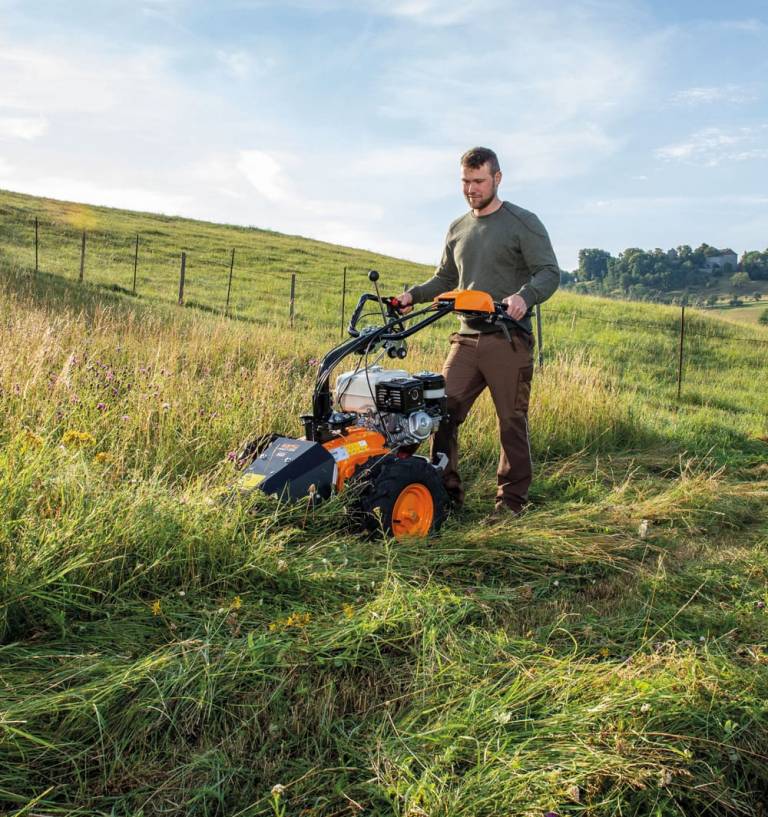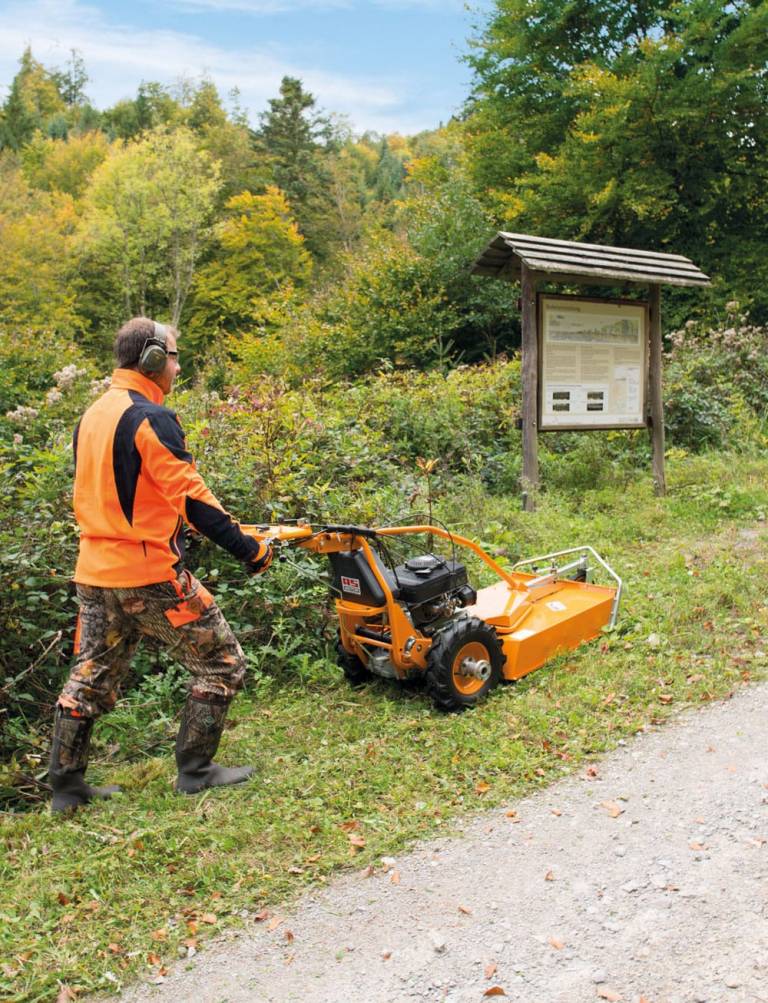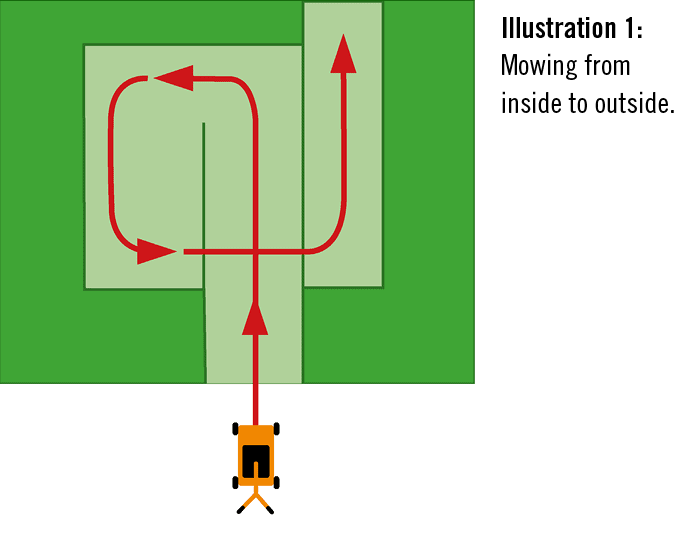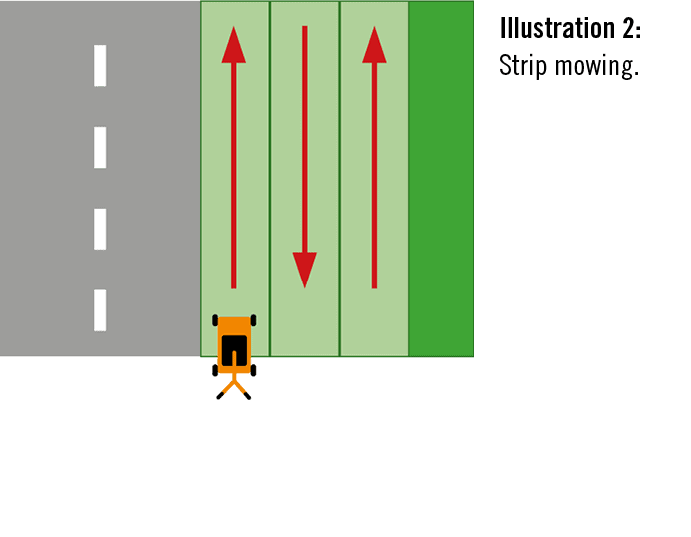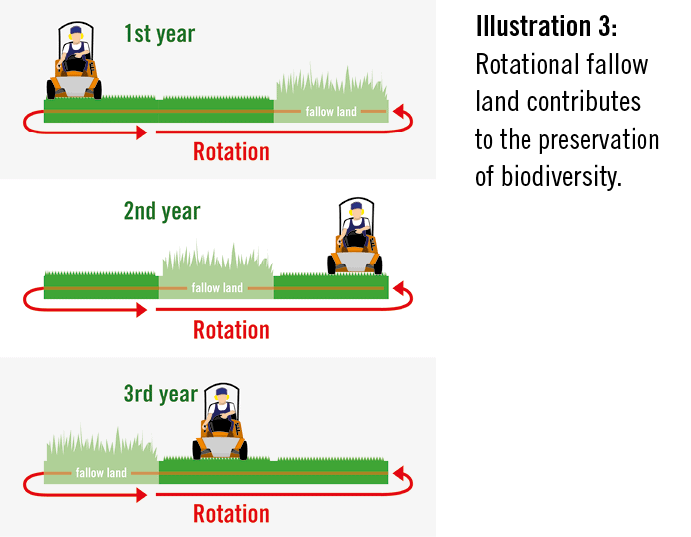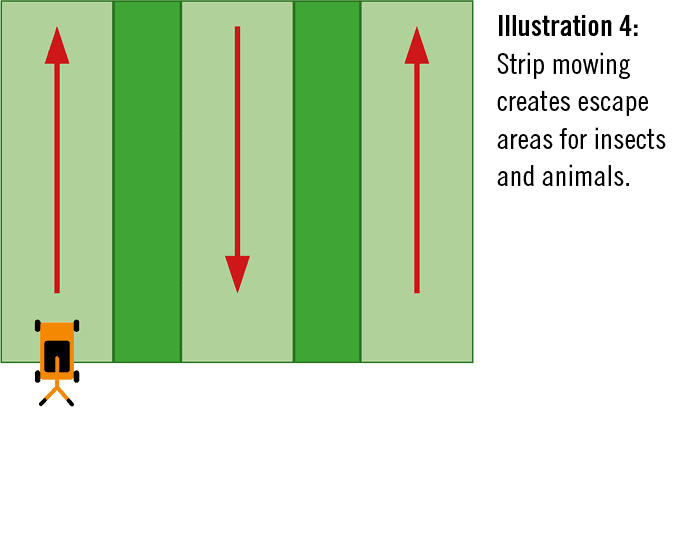Promoting biodiversity
Ecologically oriented maintenance means that the mowing process must take into account ecological interrelationships and nature conservation objectives, so that species diversity increases in the medium to long term.
Protecting animals and insects
Unfortunately, there is no ideal maintenance period for all animal and plant species. Therefore, any maintenance planning must take into account which species should be protected and promoted.
Likewise, no mowing option exists that protects animals in particular. To minimize mowing’s effects on fauna, the following relationships should be known.
Mowing: As little as possible, as often as necessary
For ecologically oriented landscape conservation, the following recommendations are relatively easy to implement and should become standard.
Frequency of maintenance:
- Principle: Keep it to a minimum
- Adjust to the species to be promoted and the type of meadow
- For Central European meadows a minimum is about one or two cuts per year
- In any case prevent the spread of shrubs (bushes)
- Small, rough pastures can be mowed and collected just once every two to three years
- For nutrient-rich sites, two to three cuts per year are first necessary followed by the collection of cuttings
- To adopt no maintenance measures is not an option. Plants worth protecting lose their habitat as a result
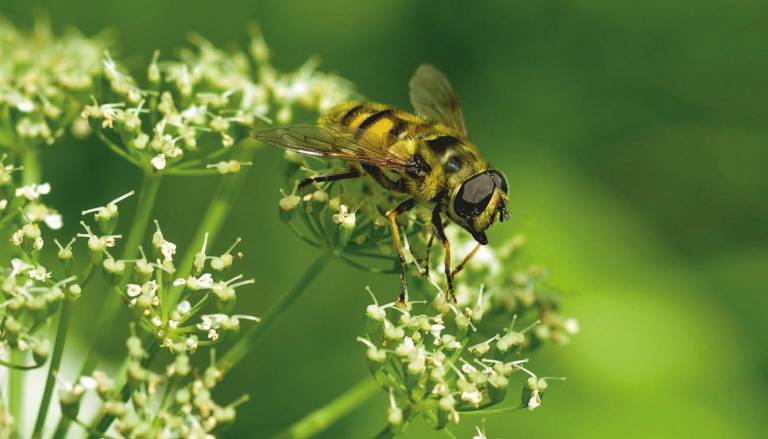
Insect-friendly mowing in the morning or evening hours
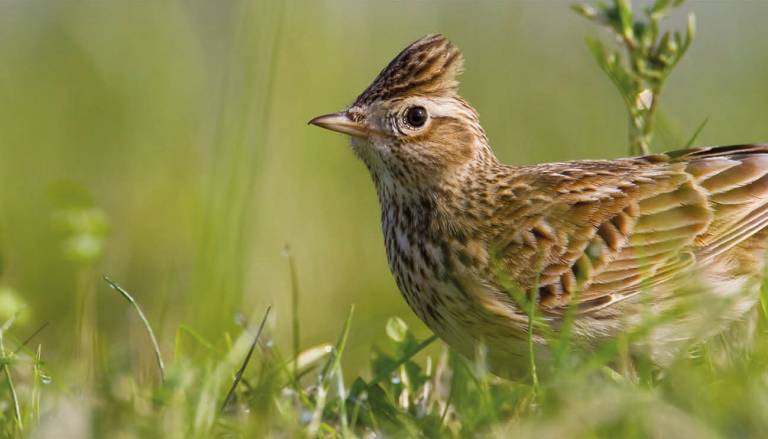
A very late mowing in autumn protects ground-nesting birds
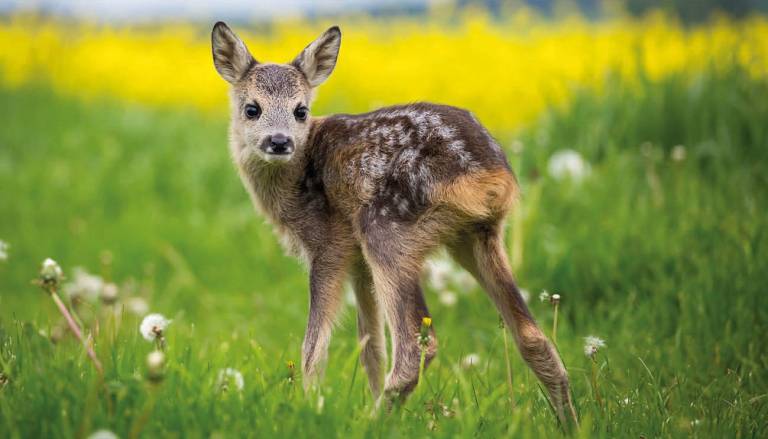
Avoiding fawns and wild animals on the evening before mowing
Maintenance period:
- Mowing work before the beginning of spring must be completed by 15 March
- Flowery areas: After most of the plants (50-70%) have faded. This corresponds to “maintenance after sowing”
- Areas with high insect population: In the early morning or late evening hours for flower-seeking insects
- Generally on cooler, windy days with overcast skies for many insect species
- Bird protection: start mid-July at the earliest, better August/September
- Wildlife: similar to the protection of birds. The best way to protect deer and wild animals is to agitate them the evening before mowing by running them off the area and placing scent marks
- Delayed mowing from spring to summer is generally considered positive for plants, insects and spiders
- A very late mowing in autumn is perfect for birds, mammals, amphibians and reptiles. However, it leads to disadvantages for plant biodiversity
- Mowing outside the vegetation period is not recommended, as the cuttings are not moved and animals are disturbed in their winter rest
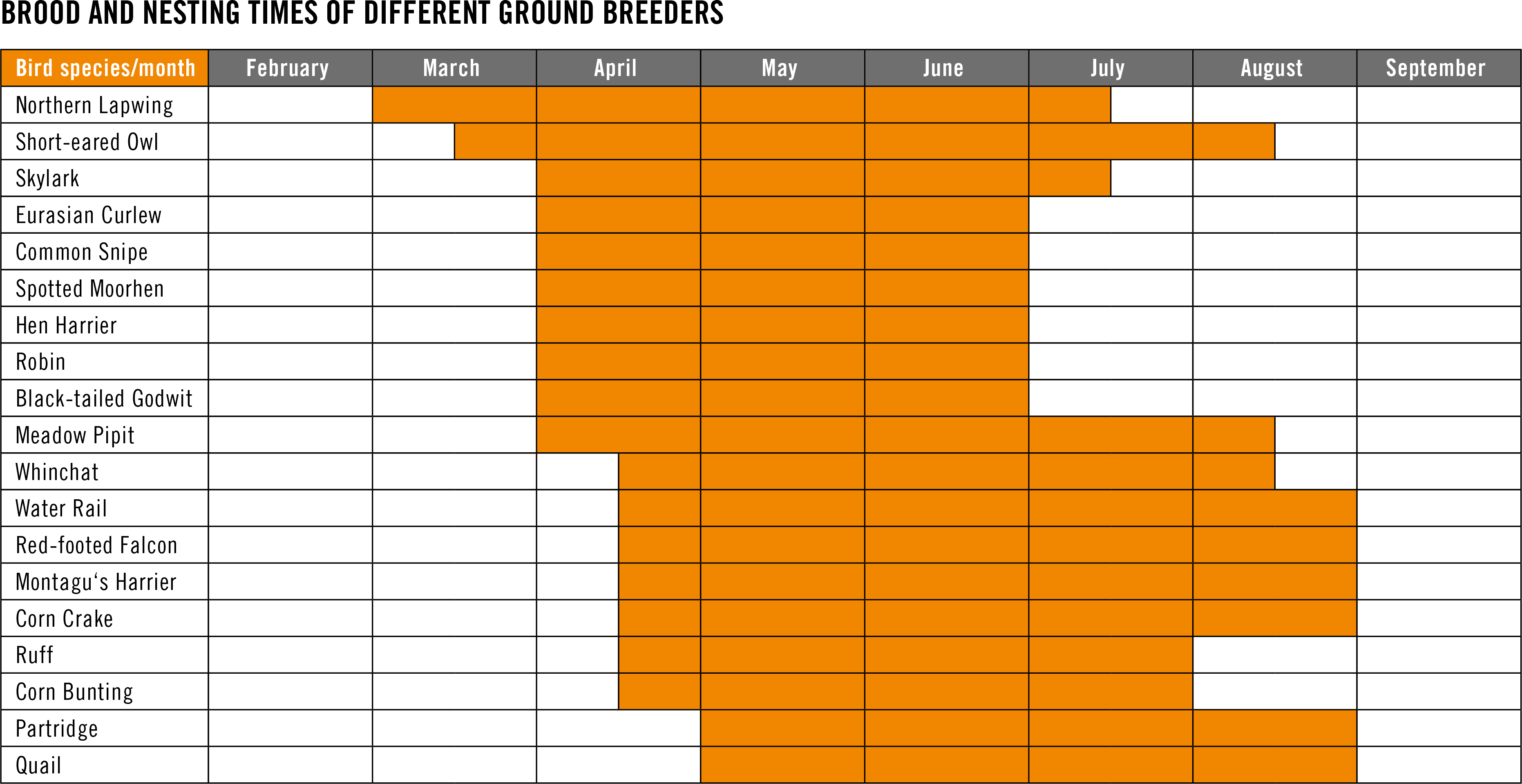
Mowing direction:
- The mowing direction is essential for animal protection
- Mowing from the middle of the surface to the outside is recommended. Animals are pushed toward the edge and can thus flee into the protection of the vegetation (see figure 1)
- Alternatively, striped mowing can be used. Here animals are also driven towards the edge (see figure 2)
Partial maintenance:
- Avoid large-area and simultaneous mowing
- Maintain unmown areas as escape areas (old grass strips). Here subpopulations can develop undisturbed and then repopulate the mowed areas
- Old grass strips should ideally measure 10 x 50 m and are mowed the following year
- If possible and in accordance with the protection goal, 10 to 20% of the area should be left un-mowed
- Sectional mowing of areas according to the principle of moving or rotating fallow strips (see Illustration 3)
- Strip mowing (mosaic mowing) is useful if the entire area must be mowed in two weeks (see Illustration 4)
